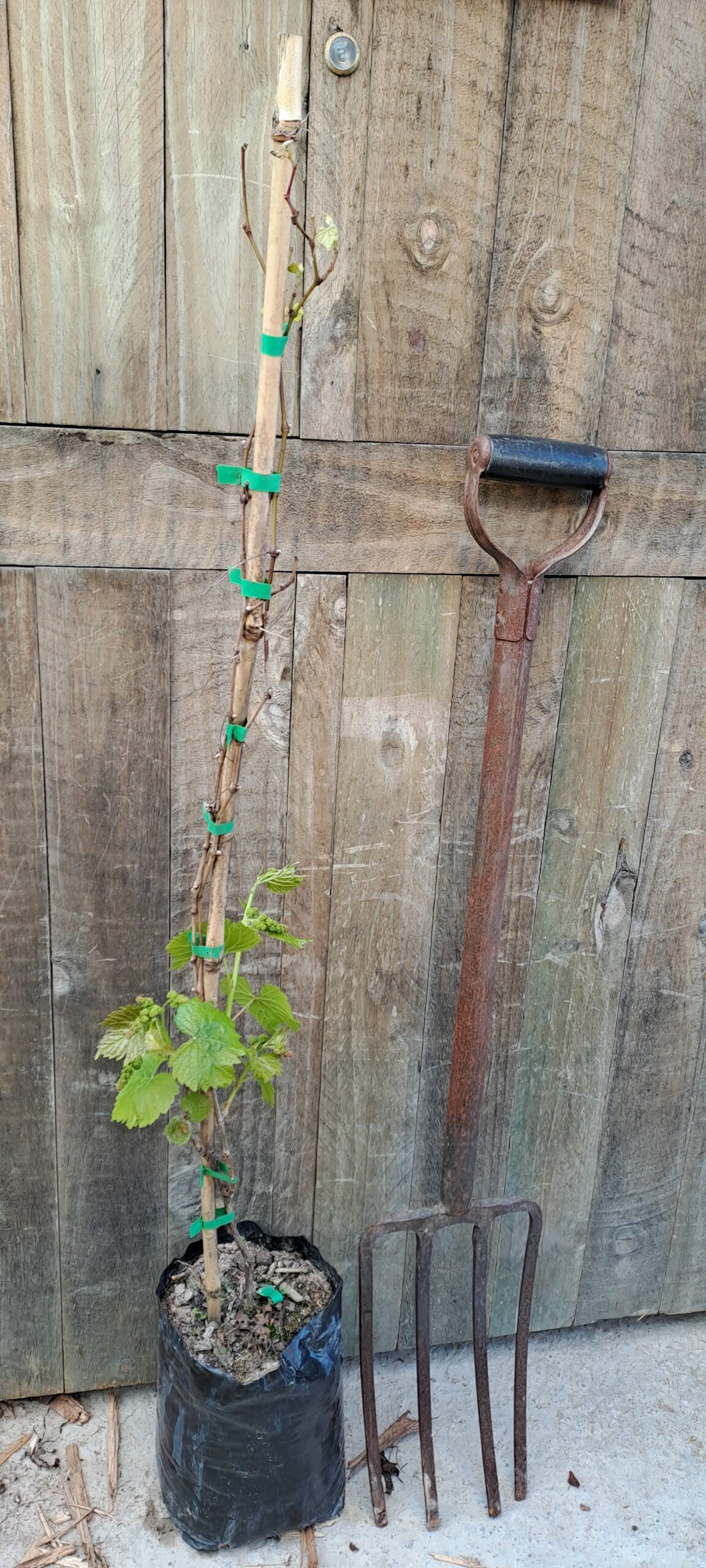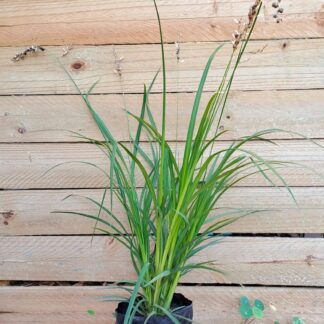Description
Hanepoot Vine Growing Conditions
Botanical Name: Vitis vinifera ‘Hanepoot’
Description: The Hanepoot vine, a South African favorite, is known for producing large clusters of sweet, juicy, greenish-golden grapes. These grapes are prized for their muscat-like flavor and versatility, making them perfect for fresh eating, winemaking, or drying into raisins. The vine itself is vigorous and hardy, with broad, deeply lobed leaves that provide ample shade and turn golden in autumn, adding a splash of color to your garden.
Light Requirements: Hanepoot vines thrive in full sun, needing at least 6-8 hours of direct sunlight daily. Full sun exposure ensures optimal fruit development and flavor.
Watering: This vine prefers moderate watering, particularly during the growing season and dry periods. Water deeply and infrequently to encourage a strong root system, allowing the soil to dry slightly between watering to prevent root diseases.
Soil: Hanepoot vines do best in well-draining, sandy to loamy soils with a slightly acidic to neutral pH of 6.0 to 7.0. Enriching the soil with organic matter will improve its fertility and structure, promoting healthy vine growth.
Temperature: Hanepoot is well-suited to warm, temperate climates. It performs best in temperatures ranging from 20°C to 30°C during the growing season. The vine is moderately frost-tolerant but may need protection in areas with severe winter conditions.
Fertilizing: Apply a balanced, slow-release fertilizer in early spring before new growth begins. Additional feeding in mid-summer may be beneficial, particularly in poorer soils. Over-fertilization should be avoided, as it can lead to excessive vegetative growth at the expense of fruit production.
Pruning: Prune your Hanepoot vine in late winter during dormancy. Pruning is essential for maintaining vine shape, promoting air circulation, and encouraging fruit production. Remove any dead or weak wood, and thin out dense areas to allow sunlight to reach the fruit.
Support: Provide a sturdy support structure such as a trellis, arbor, or pergola to accommodate the vigorous growth and heavy fruit clusters of the Hanepoot vine.
Pests and Diseases: While generally resilient, Hanepoot vines can be susceptible to pests like aphids, spider mites, and grapevine moths, as well as fungal diseases such as powdery mildew and botrytis. Regular monitoring and appropriate treatments will help keep these issues under control.
Harvesting: Hanepoot grapes are typically ready for harvest in late summer to early autumn. The grapes should be fully ripe, with a golden hue and a rich, sweet flavor. Taste the grapes regularly as they ripen to determine the best time to harvest.
Uses: Hanepoot grapes are versatile, enjoyed fresh, made into sweet wines or jams, or dried into raisins. The vine’s attractive foliage and fruit also make it a popular choice for decorative garden structures.
The Hanepoot vine is a rewarding addition to any garden, offering not only delicious grapes but also a touch of elegance and shade. Perfect for both novice and experienced gardeners, it’s a vine that brings taste and beauty together.






Reviews
There are no reviews yet.